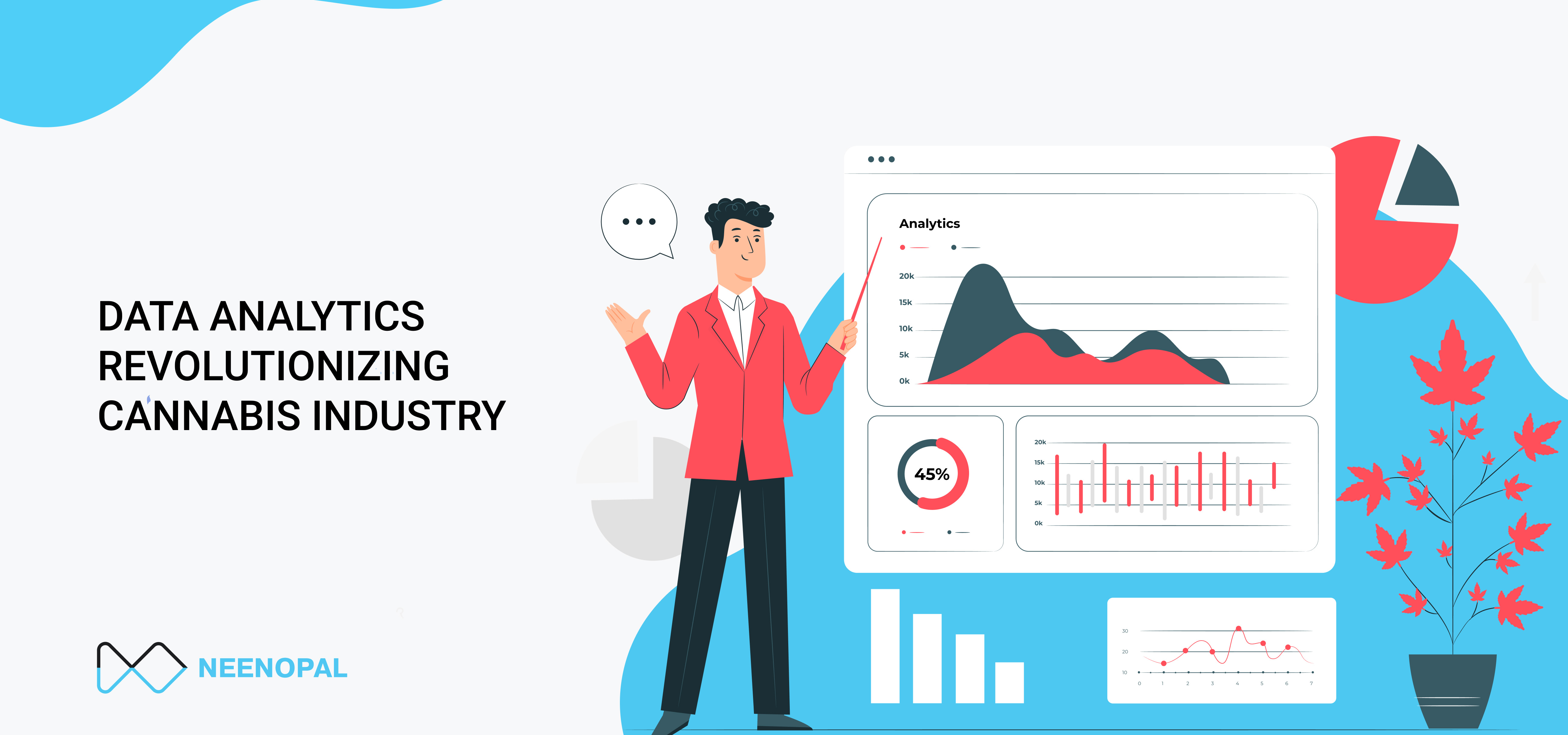Cannabis industry is one of the emerging and promising industries
According to a research report , by 2027, the global market for marijuana is predicted to grow to USD 73.6 billion, with a CAGR of 18.1%. Many experts expected very high growth in this industry, however since Covid-19 outbreak, the growth has been stagnant. Because of challenges like high level of competition, low differentiation among products, lack of historical data, diverse and complex regulations and heavy marketing expense, many firms in this industry are grappling with cash flow issues. Even though many states in the U.S. are legalizing marijuana (check out the map below), every city and county have their own ‘say’ in allowing Cannabis stores in their areas, making the regulatory hurdles more complicated. Further, controversy around vaping illness in 2019 has affected in this industry badly. The industry landscape is also changing rapidly – there is a shift of demand from traditional products like flowers and oils to ‘Cannabis 2.0’ products like edibles and beverages. Among all these problems & changes, advancement in data analytics offer a silver lining for this industry.
Leveraging the advancements in data analytics, machine learning, and Artificial Intelligence is not a new phenomenon – a plethora of companies across diverse industries, including CPG (Consumer Packaged Goods) firms and retail outlets, are using these techniques to improve their bottom line. Conversion of a tremendous amount of raw data into actionable business insights have propelled significant growth for these companies and industries. Now, the Cannabis industry is also poised to take advantage of these advanced data science techniques. Interestingly, the application of these advanced data science methods is not limited to traditional forecasting and inventory management – companies are increasing optimizing the entire value chain using data analytics – right from product development (in this case, growing the plants) to logistics, sales, and regulation domain as well.
Let us delve into the key areas in the Cannabis industry can transform:
Customer Analytics:
Raw data which originates in the form of sales tracking systems, POS systems, consumer websites/applications, and unstructured data on social media, if analysed correctly, can transform the industry entirely. Advanced machine learning algorithms can be used in Customer Analytics, to get valuable insights about customer behaviour. Companies can benefit greatly if they understand target customer segments and their needs, persona, and behaviour and most optimum channelling strategy to reach these target customers.
In-depth insights into customer behaviour can also help in strategy formulation for overall business development. Companies face many hard decisions – what should be the product mix, what should be the optimal pricing of each product, what should be the ideal promotion strategy and channels, how to build a company’s brand and optimize product experience, etc. Instead of answering these questions based on ‘gut’ feeling as traditionally many executives have, analytics can unveil the ‘truths’ hidden in the vast pool of data. Decisions, when taken based on insights from data analytics, tend to be more beneficial for companies.
There has been a recent shift in the customer demand pattern – users are preferring different form of Cannabis products like edibles and beverages, over traditional Cannabis products. Further, post Covid-19 outbreak, customers are preferring ‘order online and pick-up from store’ option, with increase in transaction value and product mix per order. Such trends can be easily tracked with the help of machine learning and Artificial Intelligence algorithms and can benefit businesses hugely.
Real-Time Sales Tracking:
As the Cannabis industry is poised to grow rapidly, companies are coming up with newer product lines, expanding geographically, and are using diverse channels like retail and e-commerce to reach the end consumer. Although this means more revenue, it also means a rise in the complexity of the raw data. Advanced machine learning techniques are of great help to do real-time analysis of which products are trending, in what geography, through what channel, which customers are buying. Further, companies can greatly benefit if they use advanced data visualization and BI tools to visualize real-time data. Such tools will enable chief decision-makers to rapidly take decisions that can have a great impact on the Top line and profitability.
Identifying Future Market Trends:
When industries grow as rapidly as the Cannabis industry is predicted to grow, the number of players in the industry also increases and this directly means a rise in competition. Data analytics can help companies stay ahead of the competition and minimize external risks. For example, real-time market intelligence can help companies to know what the trends in the market, what are the untapped opportunities, what competitors are doing, what are possible risks and uncertainties in the future and how to hedge against them, etc. Such market intelligence can boost companies’ revenues by correctly anticipating market trends, change in competitor pricing, and fluctuations in volumes and proactively taking correct analytics backed decisions.
Regulatory Compliance:
One of the most painful areas in the Cannabis domain is the legal and regulatory requirements. Although many states in the U.S. are slowly legalizing the use of marijuana for medical purposes (at least), overall, the industry is heavily regulated. Companies end up spending a lot of time and money on ensuring that such regulations are adhered to. Advanced machine learning tools can greatly help in automating many mundane tasks in which companies perform and improving the efficiency and efficacy of such processes. Further, using predictive analysis on compliance data, possibilities of regulatory non-compliance can be assessed accurately. Without worrying too much about regulations, companies can focus on the important aspects of a business – product, marketing, sales, etc.
New Product Development:
Since the marijuana industry is highly regulated, there are restrictions on clinical research because of which development of products gets severely affected – because of a lack of research data. However, data analytics can fill this data insufficiency by collecting and drawing insights from consumer data, which in turn can be used as input to new product development. Such data can be in the form of customer surveys/feedback forms and can be leveraged to get regulatory permits for new launches and reduce time to market.
Optimizing Marketing & Distribution:
In the United States, different states have different laws regarding the distribution of marijuana, increasing the complexity for businesses. When customers use online platforms like websites and mobile applications to order marijuana, a tremendous amount of data is generated – for example, which products customers click on, the location of customers, how much time a customer spends in considering each product, etc. A lot of insights about customer behaviour can be obtained from carefully analysing such raw data and these insights can greatly optimize the distribution and marketing efforts of companies.
Minimizing Risk Across Value Chain:
Throughout the value chain of the Cannabis industry, businesses have to take risks because of inherent uncertainty. E.g. how much inventory of a particular product to hold, how much to produce, etc. Big Data and predictive analytics tools can be used to minimize the business risk associated with such uncertainty. These tools can help businesses optimize inventory at various stages, help in making production decisions, anticipate failure events, predict sales, optimize supplier network, optimize distribution, etc. Overall, such data-backed decisions will help companies get an edge over competitors.
Enhancing Operations:
Advanced machine learning and Artificial Intelligence, if used to optimize the production (growing) of cannabis, can greatly increase product quality and revenue and at the same time reduce operational costs. E.g. data analytics can be used to optimize various factors that are important during cannabis cultivation – humidity, temperature, etc. By analysing raw data and results, machine learning algorithms can find out the optimum growing conditions and reduce the human judgment factor. Such applications can greatly enhance & stabilize product quality, reduce wastage, and minimize operational costs.
Enhancing Customer Experience:
Recent studies show that for Cannabis industry, customers are preferring a lot more interaction with retailers than in the past. Artificial Intelligence can be used to design chatbots that talk to customers, understand their requirements, and recommend the best marijuana product for medical purposes to them. Accurate recommendations are possible because machine learning algorithms are trained using a vast amount of data like results obtained during the testing phase, feedback from users, customer behaviour data, etc. The chatbots can also be used to educate customers about the medical uses of marijuana.
Conclusion:
Big Data, Artificial Intelligence, and machine learning are all set to disrupt the entire value chain of the Cannabis industry. These tools can create great business value in various domains like cultivation operations, distribution, and logistics, inventory management, forecasting, marketing and promotion, customer service, etc. Predictive analytics can be used to optimize almost every stage in the value chain which will ultimately lead to an increase in revenue and a decrease in costs. Companies in the industry must realize that use of advanced data analytics is a must if they are to stay competitive.
There is no doubt that machine learning and advanced data analytics are going to transform the future of the Cannabis industry. The question is – who will make the most of it?





